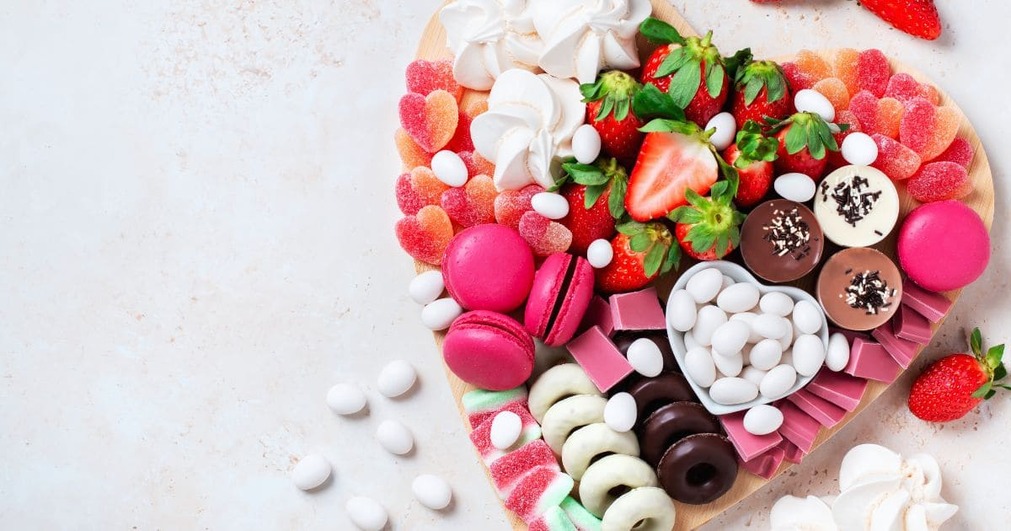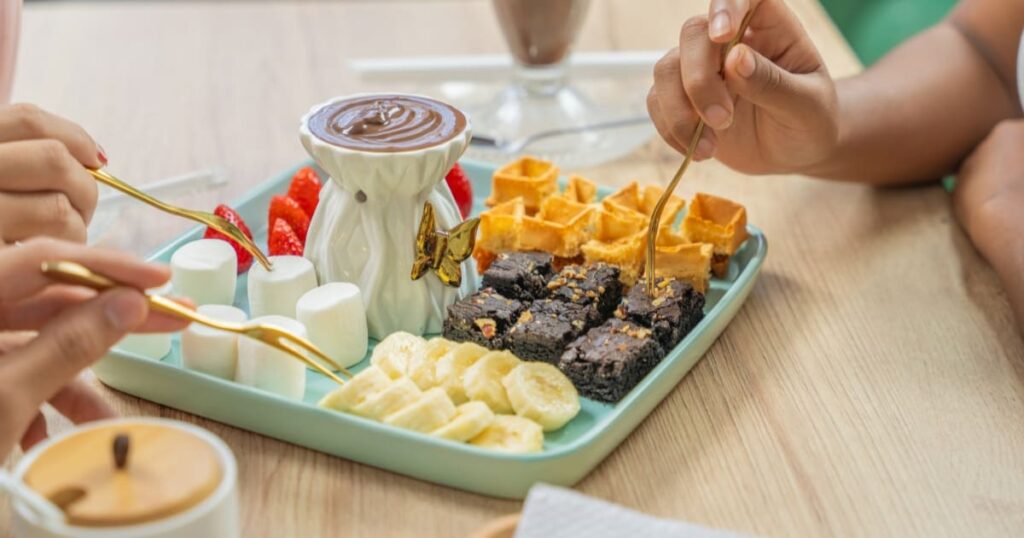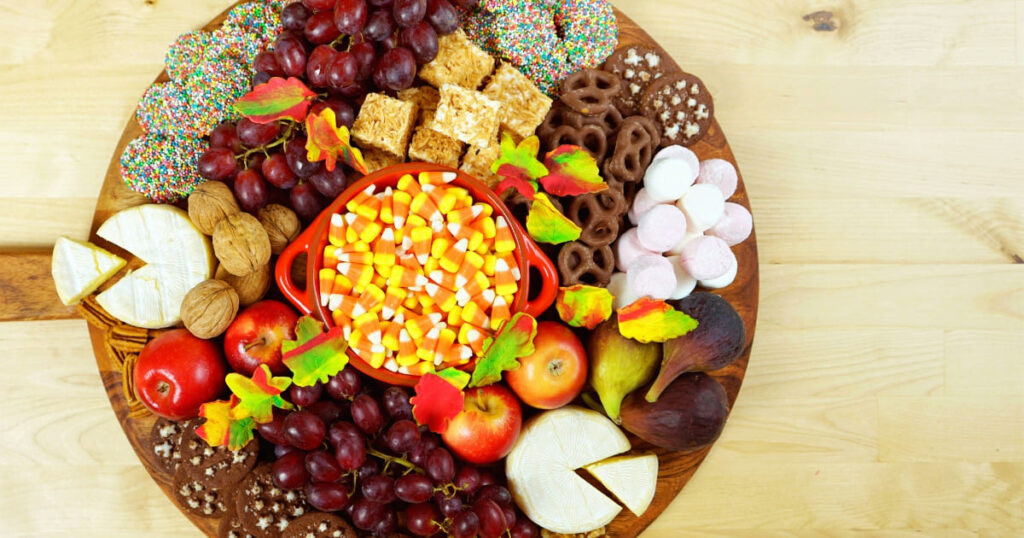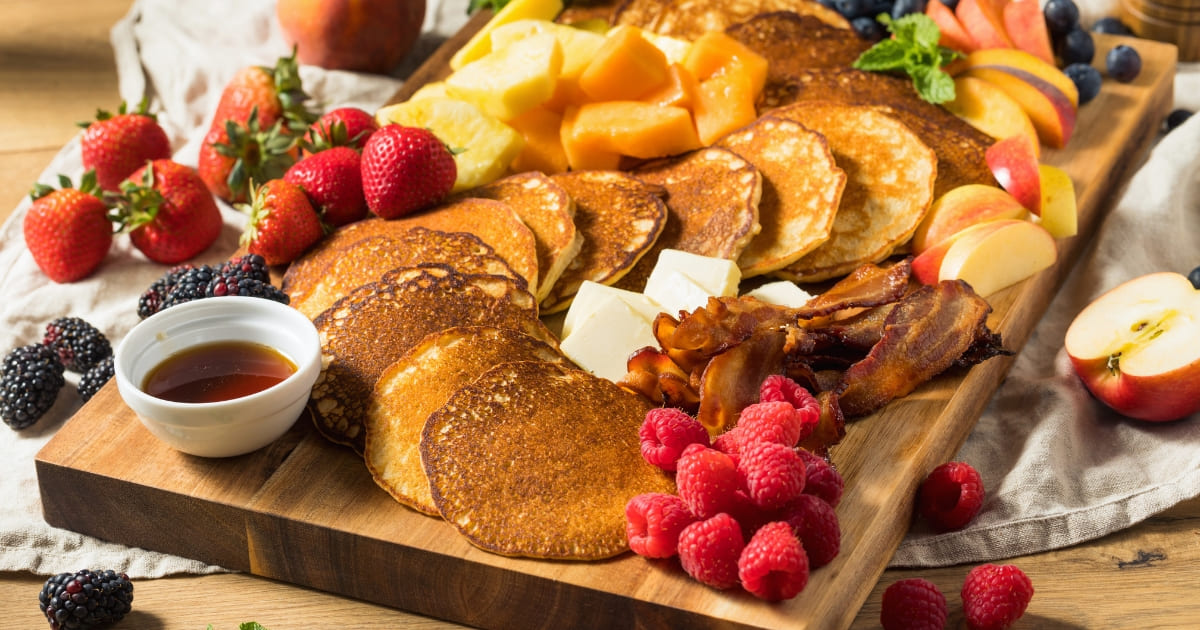Restaurant Dessert Boards -6 Easy Steps to A Memorable Dessert
Table of contents
Charcuterie boards have taken the culinary world by storm, but the trend extends far beyond cured meats and cheese. Dessert boards are the hottest new way for chefs to showcase creativity and satisfy every sweet tooth.
Today, we explore the world of dessert charcuterie boards and show you six easy steps to create memorable sweet offerings for every occasion.
What Is a Dessert Board

Dessert boards, also called dessert charcuterie boards, are a smorgasbord of bite-size sweet treats ideal for sharing. They are perfect for groups and foster a sense of fun and community at the table. Dessert boards are the perfect platform to showcase the chef’s wide range of skills and creativity, as the possibilities of what you can create are endless.
Just like a traditional meat and cheese charcuterie board, a dessert charcuterie board incorporates numerous sweet elements on one platter, including bite-size treats, chocolates, candies, fruits, nuts, and dips, making it the ideal sharing dessert for any number of people.
How to Create the Perfect Dessert Board
When it comes to dessert boards, there’s no one-recipe-fits-all. So, let’s look at some of the main aspects you need to consider when working on your dessert board:
1. Choose Board Materials and Size
The first step toward building the perfect dessert board is choosing the right board or platter to showcase your sweet treats. Consider the material that would be best suited for your needs – wood, slate, plastic, marble, or custom-made boards. Each has its own distinct advantages and disadvantages.
- Wood is a timeless classic, but cleaning and keeping it sanitary can be a hassle in a busy restaurant.
- Marble and slate are durable and sturdy, but they are also heavy and can chip and crack easily in a restaurant kitchen’s frantic hustle and bustle.
- Plastic is durable, cost-effective, and easy to clean, but might come across as cheap.
Consider the material that would be best suited for your needs – wood, slate, plastic, marble, or custom-made boards. Each has its own distinct advantages and disadvantages.
The shape and size of your boards are also crucial. It’s no use having extravagant large platters when your tables are small or when you’re only serving a couple of people.
2. Prepare Your Tools
Assembling your dessert boards should be a creative endeavor of tastes and textures. To best present your delectable dessert board ideas, you need the right tools, such as:
- Tweezers: Ideal for picking up small dessert bites and precisely placing them where you want or for placing smaller elements like edible flowers, gold leaf, and other garnishes on your boards.
- Piping Bag: For adding delicate dollops of sauces and creams on your plates between other elements to create different textures and shapes.
- Brushes: Ideal for creating interesting sauce smears. Small Bowls and Spoons: Great for holding various sauces on your boards Skewers: For an attractive visual appeal and added dimension.
3. Select the Desserts

Choosing the Right Desserts
Choosing suitable desserts for this type of presentation is crucial. Remember that, unlike a single serving of a conventional plated dessert, your dessert board might stand out on the table for quite a while.
Here’s what to consider when choosing the ideal desserts for your board:
- Freshness is Key: Opt for desserts that hold up well at room temperature, like cookies, brownies, cakes, pies, and dried fruits. Explore deconstructed versions of classic desserts, like offering individual mini cheesecakes or bite-sized pavlovas.
- Visual Appeal: Create a symphony of textures and colors. Think: creamy mousses next to crunchy biscotti, vibrant berries alongside dark chocolate. Feel free to add pops of color with candied citrus peels or crystallized violets.
- Think Seasonal: Feature seasonal fruits like summer berries and fall orchard selections to highlight the freshness and flavor of the season. Highlight these seasonal fruits by incorporating them into homemade jams, compotes, or sorbet for the board.
- Balance Flavors: Find the balance between indulgence and health by incorporating fresh fruits and nuts alongside more indulgent cakes and pastries.
- Embrace Convenience: Utilize pre-cut fruit platters to save prep time while offering various fresh options.
- Get Creative: Explore unexpected elements like popcorn for a salty-sweet contrast, edible flowers for a touch of elegance, or mini cannoli for a unique twist. Consider incorporating sweet and savory elements like miniature skewers of cheese and grapes or a selection of cured meats balanced with honey and fig jam.
- Include Dips: Homemade chocolate or caramel sauce, fruit compotes, and whipped cream elevate the experience. Offer a variety of dipping options to cater to different palates, including chocolate and caramel for the classic sweet tooth, and a tangy citrus curd for those who prefer a touch of tartness.
- Add Labels: Identify ingredients on the board to avoid confusion and cater to allergies.
- Be Mindful of Allergens: Consider a dedicated “allergy-friendly” board with gluten-free and nut-free selections.
4. Arrange Your Desserts

Now that you have decided on the type of desserts you would like to include in your dessert smorgasbord, it is time to plan how you will arrange them to create the most visually appealing product.
Consider these aspects when arranging your dessert board:
- Strategic Placements: Arrange elements for visual intrigue, using height variations and color blocking for impact. Create a focal point with a towering centerpiece, like a miniature meringue or a sculpted chocolate swan.
- Pick a Theme: Align the board’s theme with your restaurant’s aesthetic. Rustic themes might feature mason jars filled with jams, while a modern board could utilize geometric shapes, bold colors, and sleek designs. Consider seasonal or holiday themes, like a tropical board adorned with pineapple slices, mango chunks, and passion fruit curd during the summer months.
- Add Some Flair: Dessert boards are all about visual inspiration and that perfect Instagrammable photo opportunity. Consider adding elements like gold leaf, edible flowers, or custom logo chocolate decorations for a touch of artistry.
<h3id=”serving-your-dessert-board”> 5. Serve Your Dessert Board
Now for the main moment when all your hard work is about to pay off – serving your dessert board. Unlike conventional individual-plated desserts, there are numerous ways in which you can present and serve your dessert platters.
Consider enticing guests to try your sweet treat boards by putting a sample platter on display in your dining room or having a dessert cart move through the restaurant to show guests what sweet treats are available. Both are excellent ways to boost sales.
Train servers to explain the board’s contents and recommend pairings based on guest preferences to provide that personalized touch to your service. For example, suggest a dessert wine to complement a cheese selection or a cup of herbal tea to cleanse the palate after a decadent chocolate indulgence.
Also, consider refreshing your boards throughout the service by adding fresh fruit or swapping out empty dishes.
6. Store Your Desserts
Minimizing waste and maximizing the shelf life of your dessert components are essential, so consider storing them. Most baked goods are stored at room temperature in an airtight container. Cookies and brownies stay fresh for about five days, while muffins, breads, and pastries start to go stale between two and three days.
A great tip from Martha Stewart is to put a slice of bread in the container with your baked goods to help absorb moisture that will turn your sweet treats stale. Cakes and pies are also best left at room temperature in an airtight container; to maintain their freshness, make sure to wrap pieces of your cakes and pies that have been cut in plastic wrap.
If you know you will not use your desserts before they go stale, opt for freezing them immediately. Wrap them tightly in plastic wrap to lock out as much air and moisture as possible, and they should last for about four months.
<h2id=where-to-get-all-of-your-dessert-board-needs”>Where to Get All of Your Dessert Charcuterie Board Needs
If you want to elevate your dessert charcuterie boards and get the best fresh produce, edible flowers, and fresh pre-cut fruits and veggies to wow your guests, look no further than Riviera Produce for all your wholesale food supply needs.
Riviera Produce is your number-one restaurant food distributor. We source wholesale produce from trusted farms and deliver to NYC’s five boroughs, Connecticut, Philadelphia, and New Jersey.
Our fast and easy online ordering system lets you order until midnight for next-day delivery, making them the ideal convenient partner in assuring all your restaurant supply needs are always fresh and always on time.
Visit Riviera Produce today to start placing your orders and get creative with those dessert charcuterie boards!
